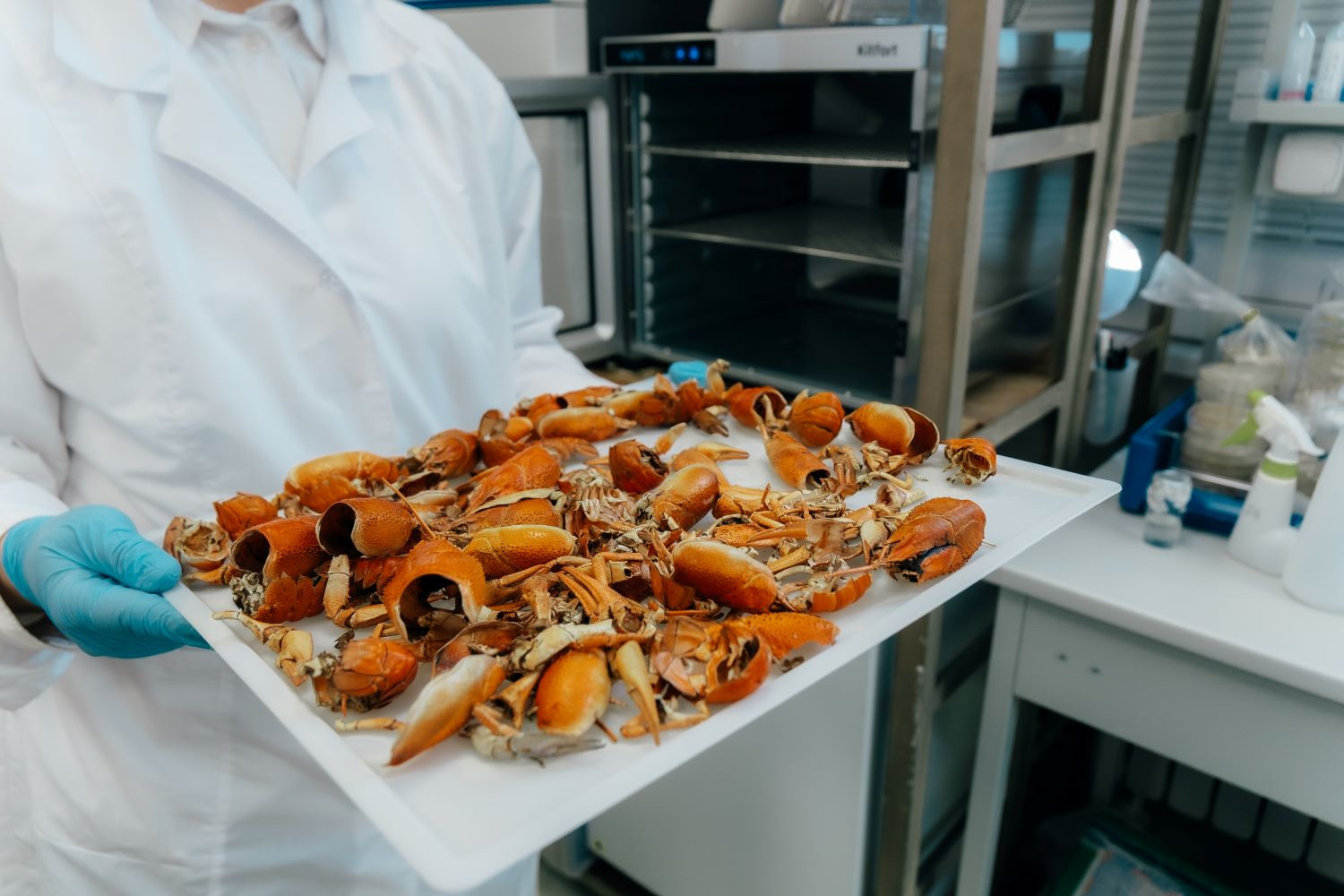Novosibirsk State Technical University (NETI) is developing a technology for the production of chitosan polymers based on local raw materials. The project is aimed at solving two tasks at once — reducing waste and expanding the potential of the domestic chitosan market.
The essence of the project is to provide an opportunity to recycle the organic remains of crustaceans to obtain functional materials for a wide range of applications. Scientists at NSTU-NETI will produce a product line consisting of chitin, chitosan and carboxyethyl chitosan using gel-phase synthesis technology, as well as cryogels based on them. At the same time, production will be carried out according to a full-cycle scheme, in which a number of products will be obtained from the initial cancer shells that are in demand in medicine, the food industry, cosmetics, agriculture, the production of dietary supplements and pharmaceuticals, biotechnologies, and water purification.
"There are crustacean farms in the Novosibirsk region and neighboring regions. The resulting waste (shell and its parts) is discarded, but it can be recycled and a useful product can be obtained. Another problem is that in Russia, in principle, there is no chitosan of domestic production. This is a big challenge that not only we are working on, but also a number of other universities and various companies. Since we are focused on our own production, we have considered this option — to help the city and the region cope with this waste. Thus, the environmental problem is being solved and the potential of the domestic chitosan market is expanding," said Alexander Drannikov, PhD, Associate Researcher at the Center for Technological Excellence at NSTU-NETI.
The peculiarity of the technology is that the synthesis takes place in the gel phase. The process complies with the principles of "green" chemistry, during which a minimum of waste is generated, and the yield of the final product is maximized.
Currently, scientists are developing a technology for isolating chitosan from cancer shells. This is a multi—step process, the most important stage of which is deacetylation, which precisely determines the final properties of chitosan.
"As a result, we must come to a technology that will allow crustacean waste to be processed into ready—made products in demand, including chitin, chitosan, and carboxyethylchitosan," said Alexander Drannikov.
The plans for the near future include a comprehensive assessment of the resource base of the Novosibirsk Region and neighboring regions. Scientists are ready to cooperate with partners on the supply of raw materials. In the future, in cooperation with an industrial partner, it is planned to scale the technology and put it on industrial rails.
The work is carried out within the framework of the strategic technological project "New Engineering solutions and artificial Intelligence for the Medical Industry" of the Priority 2030 program.
